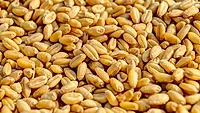Striving for Transparency: Resolving the Conflict between Gluten-Free Labeling and Precautionary Allergen Labeling

Consumers with celiac disease or nonceliac gluten sensitivity (NCGS) rely on clear, accurate information when it comes to the food products they consume. Interpreting voluntary advisory statements on products containing a gluten-free certification is a frequent and understandable source of confusion for both consumers and retailers. For example, a consumer shopping for gluten-free products at a grocery store may become alarmed when they see a product package that contains a gluten-free certification logo and the voluntary advisory statement “May Contain Wheat.”
The fact that wheat is both an allergen and a source of gluten is the cause of a lot of this confusion. As an allergen under the Food Allergen Labeling and Consumer Protection Act of 2004 (FALCPA, see “A Closer Look at FALCPA,”[1]), wheat must be identified by name whenever any fraction of wheat is present—even if that fraction does not contain gluten. The U.S. Food and Drug Administration (FDA)’s gluten-free regulation, on the other hand, does not require the positive identification of the other gluten sources (rye, barley or other crossbred hybrids) by name on the ingredient list when an ingredient derived from those sources has another common or usual name. Ingredients like malt extract or vinegar are examples of this. Rather, the regulation only limits the use of gluten-free labeling to those products that do not contain whole gluten grains (see Table 1[2]) or that contain less than 20 ppm of gluten from these sources. While this requirement is technically sufficient to ensure product safety, not all food manufacturers choose to use gluten-free labeling on their products. The lack of clear declaratory labeling for gluten sources other than wheat on all products, and the conflicts that can occur between allergen and gluten labeling, means that gluten-free consumers need to read labels carefully..png)
Several types of information on food packaging provide clues concerning a product’s gluten-free status. Examples include:
• A third-party certification mark (“logo”) indicating that either the product [as in the case of the Gluten Intolerance Group’s Gluten-Free Certification Organization (GFCO) logo] or only the management system of the food manufacturer has been certified as gluten free
• Manufacturer claims that a product is gluten free
• Ingredient lists
• Voluntary advisory statements
Voluntary advisory statements, also known as precautionary allergen labeling, are not required or regulated by FDA, other than through the general FDA requirement that all labeling be truthful (see Figure 1[3]). In the case of products certified gluten free under the GFCO program, voluntary advisory statements should be used by manufacturers and interpreted by consumers as follows:
.png)
“May Contain Wheat.” This statement may be used by companies that handle wheat in their facility but keep it segregated from gluten-free production. Plants that produce GFCO-certified products and also handle wheat take additional precautions to ensure that all ingredients and the certified finished product contain less than 10 ppm of gluten as required for GFCO certification.
“Processed on Shared Equipment with Wheat.” Some GFCO-certified products are made in facilities that also manufacture products that contain wheat, but these facilities have very strict controls, cleaning protocols and equipment and product testing requirements to ensure that gluten remains below 10 ppm in their gluten-free finished products.
“Contains Wheat.” This designation should be used only if wheat has been intentionally added to a product. On a GFCO-certified product, this would indicate that the product contains wheat grass or another gluten-free component of wheat.
In addition, a food label that includes the term “wheat” in the ingredient list or in a separate “Contains Wheat” statement as required by the Federal Food, Drug, and Cosmetic Act of 1938, and also bears the claim “gluten-free” will be deemed to be misbranded by FDA unless its labeling contains additional language clarifying that the wheat has been processed to allow the food to meet FDA requirements for a “gluten-free” claim. Moreover, there have been some instances of manufacturers incorrectly using a “Contains” statement in place of a “May Contain” or “Shared Equipment” voluntary statement.
Transparency in food labeling benefits everyone. Manufacturers should be as clear as possible in their labeling and be able to explain what their voluntary advisory statements mean when they receive inquiries from consumers on their customer service help lines. Additionally, placing explanations of voluntary advisory statements on a manufacturer’s website can go a long way toward alleviating confusion about those labels in the marketplace.
Laura Allred is the regulatory and standards manager for the nonprofit Gluten Intolerance Group (GIG). Allred’s experience includes a background in immunology and 8 years of directing a food testing laboratory and test kit manufacturing operation. GIG’s food safety certification programs, the GFCO and Gluten-Free Food Services, have been recognized leaders in the gluten-free community for more than 20 years. The GFCO certification logo is the symbol of trust for the gluten-free community, with more than 40,000 products certified worldwide. For more information, visit www.gluten.org.
References
1. www.foodallergy.org/life-food-allergies/newly-diagnosed/laws-and-regulations/food-allergen-labeling-and-consumer.
2. www.bobsredmill.com/blog/special-diets/comprehensive-list-gluten-free-foods/.
3. www.fda.gov/Food/GuidanceRegulation/GuidanceDocumentsRegulatoryInformation/LabelingNutrition/ucm064880.htm.
Looking for quick answers on food safety topics?
Try Ask FSM, our new smart AI search tool.
Ask FSM →








